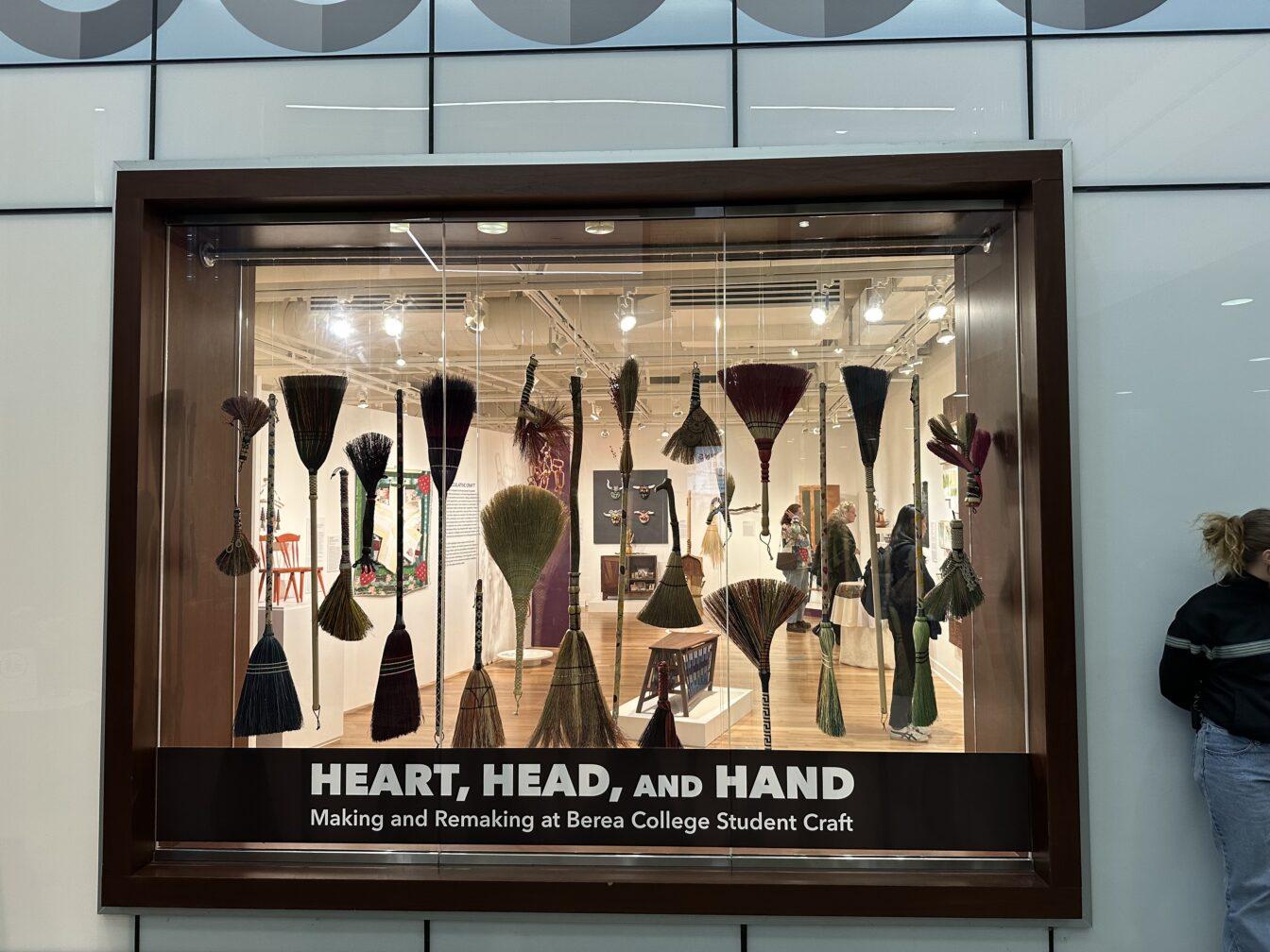In a celebration of craftsmanship, Berea College Student Craft and the University of Wisconsin’s Center for Design and Material Culture have unveiled the captivating exhibit, “Heart, Head, and Hand: Making and Remaking at Berea College Student Craft” at the Ruth Davis Design Gallery in the School of Human Ecology.
The craftworks in “Heart, Head, and Hand: Making and Remaking at Berea College Student Craft,” was curated under thoughtful approaches to art pedagogy, and will be available to visit until March 3, 2024.
The curation of “Heart, Head, and Hand” was jointly envisioned by Berea College’s Associate Vice President of Student Craft Aaron Beale, Director of Apprenticeships Hunter Elliott and Director of Weaving Erin Miller, in addition to the University of Wisconsin–Madison’s Danielle Burke, a Ph.D. student in Design Studies within the CDMC. The Anonymous Fund and the Chipstone Foundation also supported the exhibition.
The CDMC partnered with Berea College, a liberal arts college in Berea, Kentucky, for the exhibit. It tells the story of Berea’s College Student Craft artists, showcasing their craftwork from the program’s founding in 1893 to their present-day innovations. Southern Appalachian culture is a pervasive theme, with creations such as handwoven coverlets, wooden chairs and broom craft throughout the exhibit.
While similar to present designs in features, artists have modernized these historical designs to remain relevant to contemporary culture. A rainbow-dyed handwoven baby blanket, created by Wes Hanson and Erin Miller, hangs in the exhibit as a symbol of impartial love and a larger testament to the values of acceptance and equality fostered at Berea College.
Within the Speculative Art section of the exhibit, the focus shifts to the innovative designs of its present-day creators. This installment not only reimagines what contemporary craft is but also demonstrates how students use their craft as a tool for comprehension and speculation about their pasts, presents and futures. Anna Routson’s hand-woven jacquard, “Internalizing Externalities,” emulates the interconnectedness of humanity and the environment through the disjointed weaves that intertwine to form the shape of a globe.
The unity of heart, head and hand extends beyond the craftwork, inviting visitors to experience it firsthand. Patrons’ hearts are infused with the passions of each crafter when viewing their pieces and reading the impactful stories behind each work. The mind of each viewer departs on a historical expedition through a presented video that illustrates the events that led Berea College and Student Craft to its current form. Visitors can also interact with crafted items in a specific section of the exhibit, fitting the final element of the hand into this three-fold exhibit.
Berea College’s Student Craft
Berea College is located in the foothills of the Appalachian Mountains of Kentucky. Founded by an avid abolitionist in 1855 while Kentucky was still a slave-holding state, the school created a space where all students were welcome — Black or white, man or woman. Inclusion was and remains a core tenet of the college’s values. Today, nearly half of Berea’s students identify as people of color, according to the Berea College website.
Berea College students do not pay tuition and the school and is a federally recognized work college, offering each student a job upon admission, according to the Berea College website. Student Craft is one of several work opportunities available to enrollees. Within Student Craft, students are invited into the world of art, craft and production, some for the first time. Students work together to produce a large collection of crafts to be sold online or to specific vendors.
The school aims to support its students’ professional goals, assisting them in their endeavors inside and outside of the classroom. Student Craft projects are many students’ first formal art and design experiences, according to the Berea College Student Craft website.
As a second-year student at Student Craft, Taylor Nordmoe had the opportunity to get involved in the design process when she noticed an issue of gapping in the dustpans she worked on. As a result, Nordmoe initiated a new design component that is now used in the dustpans Student Craft produces.
“I was able to apply my thinking in a very different way,” Nordmoe said.
Art pedagogy in two programs
A panel discussion featuring professors from Berea College and UW explored art pedagogy before the exhibit’s opening. The panelists, who teach various crafts such as woodworking and weaving identified the transformative effect of integrating heart, head and hand in the learning environment. It’s a synergy that can be applied to all people’s lives, crafters or not.
Berea’s Student Craft and UW’s design studies department approach art pedagogy differently. The former creates an at-will learning environment, allowing students to bring their interests to the studio to guide their learning. The latter uses an academic setting to expose students to a pre-determined curriculum in a general area of interest. Despite the difference in format, the content remains identical.
Together, the panelists established that the most effective learning takes place in a structured environment. Such an environment exposes the artist to invaluable feedback from classmates and professors during the making process, as well as upon showcasing final pieces.
Culturally sustaining pedagogy, which takes an asset-based approach to learning and teaching, was identified as a key element in creating a positive art community at schools. This idea challenges traditional learning environments by focusing not on what an individual lacks but rather what they already have, UW art professor and panel moderator Erica Halverson said.
“It starts from what people are bringing into the space, and we build our practices of teaching from those assets,” Halverson said.
The panelists agreed on the large benefits of integrating the heart, head and hand when teaching. Embodied learning was identified as crucial for student progress, manifesting in both cognitive and metacognitive gains. Students can develop muscle memory through consistent practice, as well as nurture an awareness between themselves and their environment.


